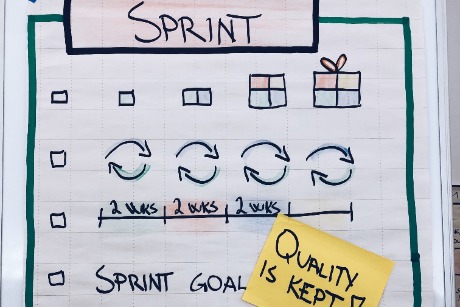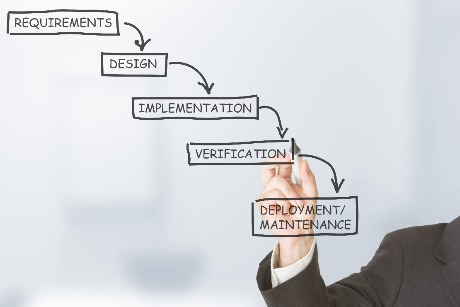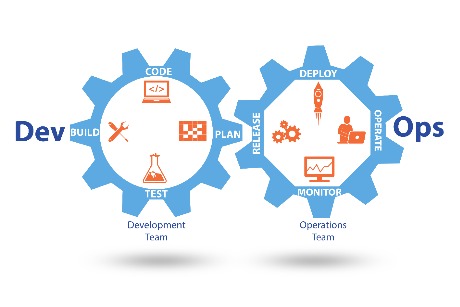
Which software development model is the best for your project?
If the plan doesn’t work change the plan, not the goal. This is what someone popular said in the past. Well, it sounds exhausting to keep shifting between goals which is why you need a perfect plan to achieve your goals without any burdensome. When it comes to Software engineering it is a very complicated process. But you don’t have to sweat about it anymore. With the advancement in technology, you can control everything at the tip of your fingers. Now the question is how this can be done.
The answer is Software development models also known as Software Development Life Cycle (SDLC) models/methodologies. These models provide a structure for planning and controlling a specialized information system to simplify the process of incremental development that is more related to project management. Software development life cycle models show the structure to navigate through the challenges of transitioning from the beginning to the end of software building.
The SDLC process is divided into different stages namely Planning, Requirements, Design, Development, Test, Deploy, and Maintain. However, the steps included can be combined or omitted based on the project’s reach. Having said that, SDLC also helps companies reduce costs and budget, meet customer expectations, increase project quality and facilitate quick software delivery to help projects run smoothly. Today, there are more than 30 myriad SDLC models in use. Selecting the right software development methodology is like achieving a milestone in your project-based work. As each brings its favorable aspects and negatives for a specific software development project or a team. In this blog, we will see some most trending models along with their essence and compare core features./p>
Here is a roadmap about what are all that is going to be discussed in this article
- Agile
- Waterfall
- Lean
- DevOps
- Spiral
The agile development methodology is incremental and iterative and was designed to minimize risk when adding new functionality and tackling minor problems during the development process. Using the Agile approach, teams develop in tiny sprints or iterations, each of which includes customer collaboration throughout the development process. This ensures quick delivery of a working product and a set-in-stone plan rather than documentation.
At the end of each time frame allotted for a subtask, the testing process is carried out and business stakeholders’ feedback is jotted down to make any further enhancements. There are many different forms of the agile development method, including scrum, crystal, extreme programming (XP), and feature-driven development (FDD) with customer satisfaction as their major goal.
Pros:
- Flexibility
- Embracing uncertainty
- Better communication
- Immediate feedback
- Iterative releases
- Product get to market faster
- Consistent evaluations
Cons:
- Lack of paperwork
- Hard to predict
- Needs the experience to use
Best suited for:
- When your project needs to be adaptive to new changes.
- If your project is mid-sized or large agile can help you break it into smaller parts.
- This is best suited when your customer needs to continuously check with the project updates.
As they say old is gold, the waterfall model created in 1970 is the oldest and most straightforward model and also the model that everyone bumps into at least once in their development life. Referring to cascading waterfalls this prominent methodology follows a rigid linear sequential flow through the entire project timeline focusing on distinct goals.
This plan-driven approach is simple and upfront, meaning each phase must be completed before you move on to the next phase. Every stage is well defined with specific assignments and milestones. And we can’t move on to the next stage until the previous stage is signed off, which means the output of the previous step acts as the input to the next step. So there is no going back even if the mistake made can break the project.
This model is beneficial for those with a clear understanding of what they need and with the perfect team, plan, understanding, and strict documentation waterfall model can do magics to your project and it can get ready in no time.
Pros:
- Easy and simple to understand
- A precise understanding of the output
- Organized documentation
- Error-free testing
- Crystal clear structure
Cons:
- No adaptability
- Lack of flexibility
- Lack of client involvement
- Long and time-taking processes
Best suited for:
- If the client has stable and unchangeable requirements.
- When the project duration is short, the waterfall model is the best choice.
- The waterfall model is well recommended when you have an ample understanding of the technology and tools used during development.
Lean is a workflow methodology and a mindset, that focuses on providing effortlessly manageable software to customers by optimizing efforts and resources. Hence the name Minimum Viable Product (MVP) strategy. The objective of the lean framework is optimizing development time, people, resources, building quality, knowledge, eliminating waste, and delivering values to customers.
This model is emphasized with continuous improvement and healthy decision-making across the organization. Emphasizing the software development production line with a restricted budget along with an essential workflow is one of the main advantages of this model.
Pros:
- Cost reduction
- Waste elimination
- Streamlined process
- Better integration
- Low Budget
Cons:
- Increased flexibility leads to inefficiency
- Huge emphasis can lead to confusion
- Lesser buy-in
Best suited for:
- Small projects with a short time frame
- When you have clear customer goals
- If you have the best team to lean on
DevOps is an integration of development and operations. It is one of the methodologies that is evolving in the SDLC arena. This methodology promotes collaboration and communication of the different departments to complete a smooth transition of a project from the initial to the final step in the SDLC process.
Continuous monitoring, cohesion between teams, quality assurance, and appropriate planning followed by those using the methodology leads to deploying a project that satisfies the customer goals. Hastening innovation with culture and automation DevOps methodology can deliver projects that can go live in no time.
What happens behind scenes is customer validation that is carried out continuously after each cycle is completed. The customer feedback collected can help the developers enhance the project and ensure that it’s industry-ready.
Pros:
- Lesser chance of product failure
- Faster releases
- Increased team efficiency
- Higher product quality
- Short product cycles
Cons:
- Higher costs due to higher resources
- Requires high expertise
Best suited for:
- When you are confident about your team collaboration
- It is the best choice if you want constant client evaluation
- Makes longer projects quicker by breaking them down into cycles.
The spiral model is a sophisticated design that involves and focuses mainly on risk assessment. This model takes a cue from the Iterative model and its repetition over and over in a figurative spiral until the entire development is completed, allowing for multiple rounds of refinement
The development in this model is carried out in loops where each loop is called a phase and the number of phases varies depending upon the size of the project. After completion of each phase, customer feedback is taken and the necessary changes will be determined, resolved, developed, and verified along with planning the future loops. Now how can this be beneficial?
Well by taking customer feedback after every spiral, intensive customer involvement appears and this means customers will be involved in every stage of the software development. This will help us reduce and mitigate the risks in earlier stages avoid time, budget, and effort consumption. Involving 4 activities such as planning, risk analysis, prototyping, and evaluation of the previously delivered part, the spiral model is one of the most consistent models for project development.
Pros:
- Makes identifying and mitigating risks easier which reduce risk factors
- Increases flexibility as we can add functions at any point in time
- Cost estimation is made easier with prototype creation
- Extreme customer satisfaction as a customer is involved in every stage
Cons:
- The success rate may depend on proper risk analysiss
- Estimating the end of a project can be harder as the functionalities keep adding
- Can be complex if we are talking about small projects
Best suited for:
- Large and complex projects as it will be easier with prototype creation
- Projects with unclear business need because the customer is having an eye on what’s going on
- If releases are needed frequently
- For a project which needs high-cost evaluation
Bottom line
With the evolving technology, it has become crucial for companies to look to the business environment that provides both innovation and improvement. And to do so you will need to choose the best method that will support your development strategies by looking at the pros and cons of each one of them. As every method is unique in its way it becomes more important for you to choose the one that benefits your requirements. Not just that, but it is also vital that the method you use goes best with your team of professionals. So which one do you think you will choose?




